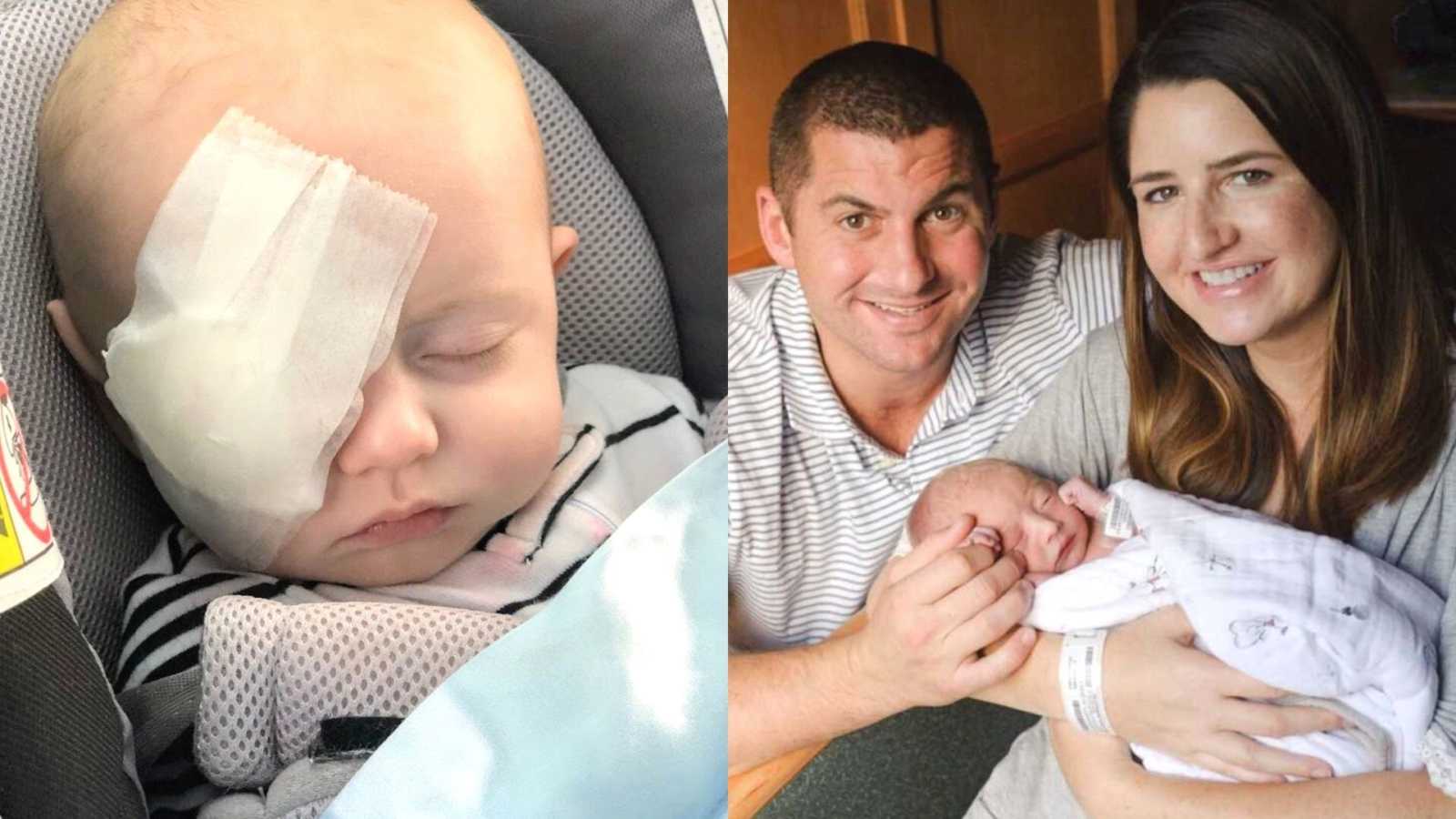“3 and a half years ago, I was on the precipice of becoming a mom for the first time. My pregnancy had been uncomplicated and even easy. I was full-term, and at every doctor’s appointment had been told I had a healthy baby. I had read every baby book there was. I’d been showered with all the usual ‘first-time mom‘ gifts. I was ready! On September 21st, 2017, one day after my 38th birthday, my precious boy, Finn, came into the world. The delivery was not uncomplicated, but he was safely in my arms after a brief stint in the NICU. 2 days later, as we were waiting to be released from the hospital, the pediatrician said, ‘Has anyone talked to you about Finn’s eyes?’
We had no idea what she was talking about and didn’t think much of it. The way it was presented to us was flippant and nonchalant, so it raised no red flags in our minds. She told us there was some blood behind his eyes, most likely from the complications from delivery, and it would probably clear up on its own. They allowed us to leave the hospital, but only under the condition we’d see a pediatric ophthalmologist within a few days. Perhaps this should have been a red flag too, but we were so happy to go home with our baby, we assumed it would all be fine. When we set off to see the ophthalmologist, my postpartum mind and body were a mess and I just wanted them to fix the issue with his eyes and go home. We were told the blood would likely dissipate on its own in a few weeks and to bring Finn in every week for a check-up. This seemed simple enough.
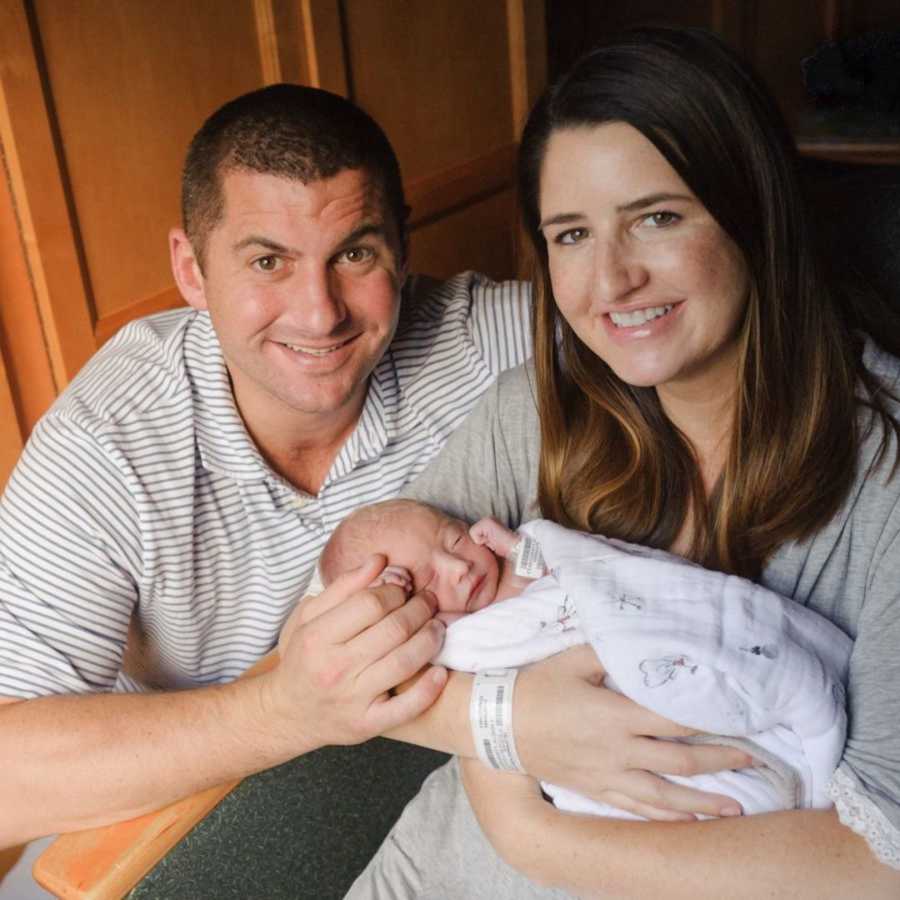
But he also wanted us to see another specialist in the meantime. Red flag number three? Yep, missed this one, too. 2 days later, we were at another appointment. Finn’s eyes were dilated and pried open as I sat in the corner in a daze and tears. Thank goodness for my husband who showed nothing but strength when I had none, and for my mother who held me while I sobbed and told me it would all be okay. This doctor told us Finn had a detached retina. He would likely need surgery. This is where I think it finally began to sink in this was not a minor issue. It took four red flags, but I was catching on. We saw the surgeon 2 days later. Again, dilation, prying, screaming (him), sobbing (me). My husband held Finn while I cowered in the corner again. This doctor in his thankfully calm, soothing voice was the one who delivered us the blow.
Finn had bilateral retinal detachment (both eyes, not one as we previously thought). Finn was blind. I remember sitting there, motionless, while the doctor said, ‘Mom, are you okay? Do you hear me?’ For a moment I didn’t know he was talking to me. I’d only been a mom for less than 2 weeks at this point, and most of it had been spent in the hospital or a doctor’s office as opposed to bonding with my new son. I hardly identified with the word ‘mom.’ He proceeded to write two potential genetic disorders on a piece of paper and explained that often with these disorders there are other issues that arise—hearing loss, lack of motor skills, delayed brain development. He recommended an MRI and blood work to rule out cancer, tumors, issues with brain development, or blood disorders. I took the piece of paper in one hand and my tiny baby in the other and left, devastated, and broken.
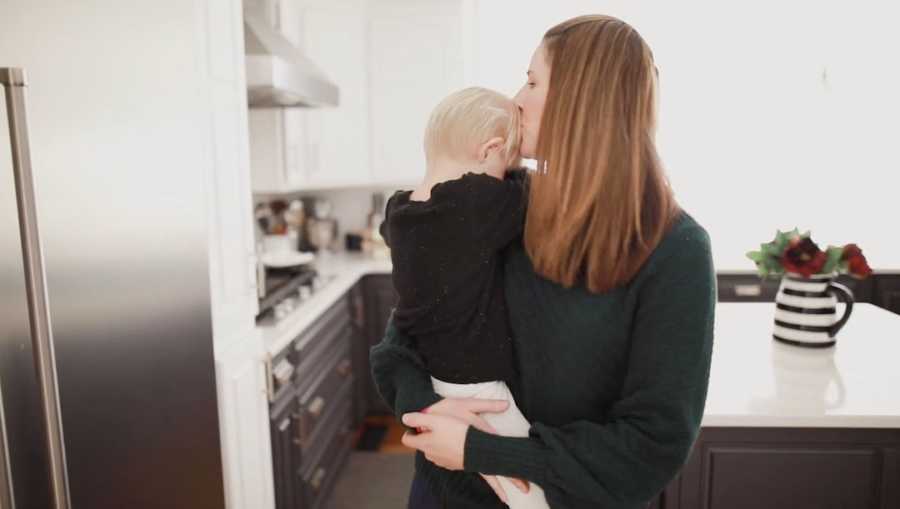
My mind raced. My son is blind. My son will never look at my face. My son will never… The ‘he’ll nevers’ started to take over. I felt hopeless and empty. We did get multiple opinions, even in other parts of the country. One doctor told us children like Finn ‘end up in wards,’ words forever burned into my brain. I wish I’d had the strength at this moment to tell him how piercing and awful it was to say to a parent, and now, how wrong he was. Another doctor put it simply, ‘Finn is receiving no visual input. He has no light perception. He is completely blind. I’m sorry I don’t have better news, but there’s not much I can do for him.’ We did the blood work and the MRI. I waited outside while Patrick stayed with Finn for both. I felt like a coward instead of the strong mother I wanted to be, but I did not have it in me to see his tiny body inside of that large, cold, noisy machine, or being held down while they searched for a tiny vein.
I was a mess, and I am sure Patrick was too, but he never showed it. He held our family together. I remember at one point him rubbing my back as I cried and said, ‘Honey, our job doesn’t change. We love, support, and take care of him. This was the plan before all this, and it’s still the plan. He’s going to be okay because he’s got us.’ He was right, and it was exactly what I needed to hear to keep going.
A few days later, we got the results. Blood work: normal. MRI: normal. This was the first good news we’d received since Finn came into the world. We were told Finn needed two surgeries, one in each eye. We went through with the surgeries at 8 and 16 weeks old, both based on a 50/50 chance of gaining light and dark perception. I’d be lying if I didn’t admit I was hoping for more. I thought since we had caught this so early, reattaching the retinas would bring a slew of signals to the brain, but I knew deep down it was not realistic.
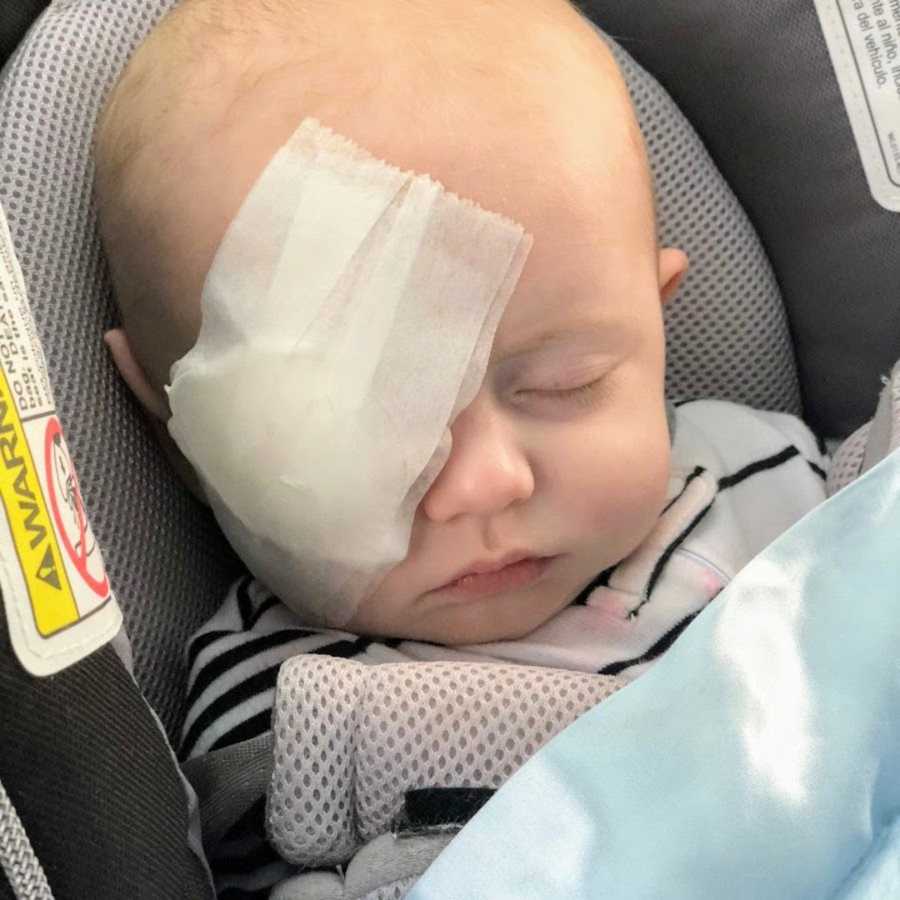
Neither surgery was successful, and I started to question our decision. Why had we just put our infant son through anesthesia and surgery for a small chance of detecting light? For any other parents out there wondering the same thing, all I can say is we made the best decision with the information we had at the time, but having the perspective on blindness we have now, we would not make the same decision today. Ironically, hindsight is always 20/20, and I can’t fault myself for doing what I thought was best then for my son. From there, we met with a geneticist and underwent three rounds of tests over the last several years looking for answers. Each round was such a scary time as we waited for the results—we want answers so we can potentially know what lies ahead, but honestly, some days the unknown feels less scary. All three tests yielded no answers, so we still live in the unknown.
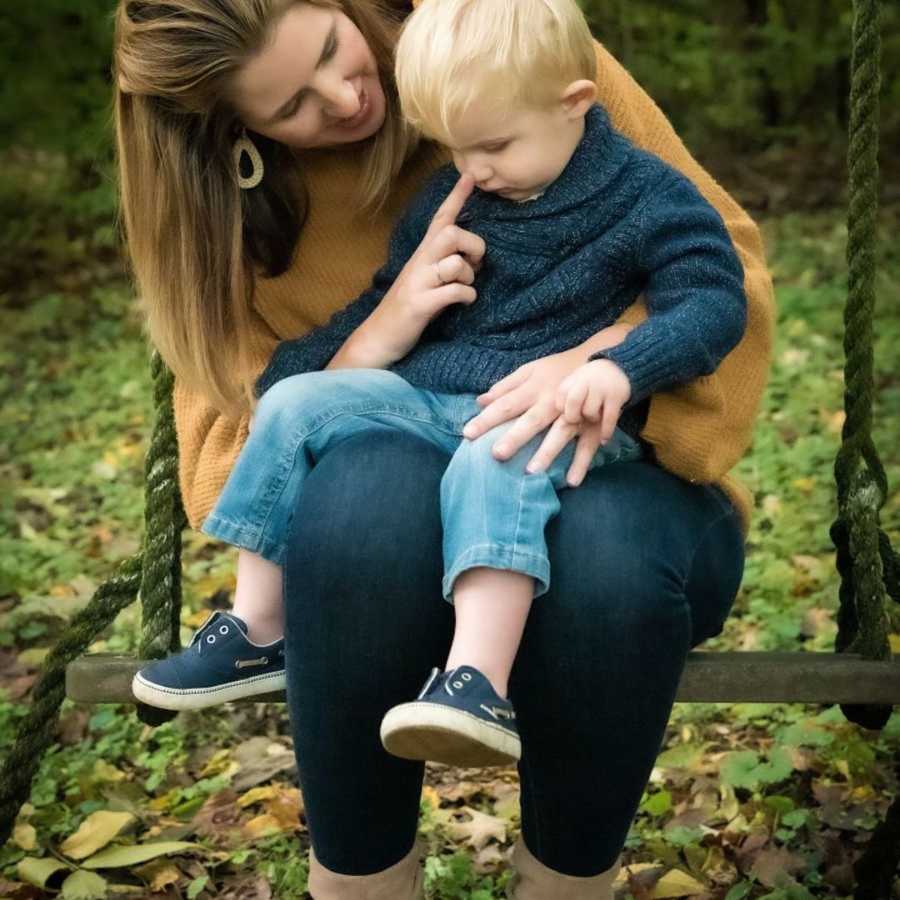
After the dead-end surgeries, Patrick pleaded with me to stop the search for cures—to just move forward with the job of loving and parenting our son and accepting him just the way he is. I understood his perspective, but I also felt my job while pregnant had been to bring a healthy baby into this world and I had failed—this was my fault. Maybe it had been a product I’d used, an exercise I’d done, or a food I’d eaten that caused his blindness, I thought. Healthy, I now understand, is such a relative term. Finn is healthy, but it didn’t feel this way then. I felt like I had failed at my job as a mother right out of the gate, and no amount of reassurance from Patrick or the doctors erased this feeling. I started reading blogs, connecting with other parents online, and reaching out to anyone I could find in a somewhat similar boat. I even began my blog to process those feelings and to try to connect with others.
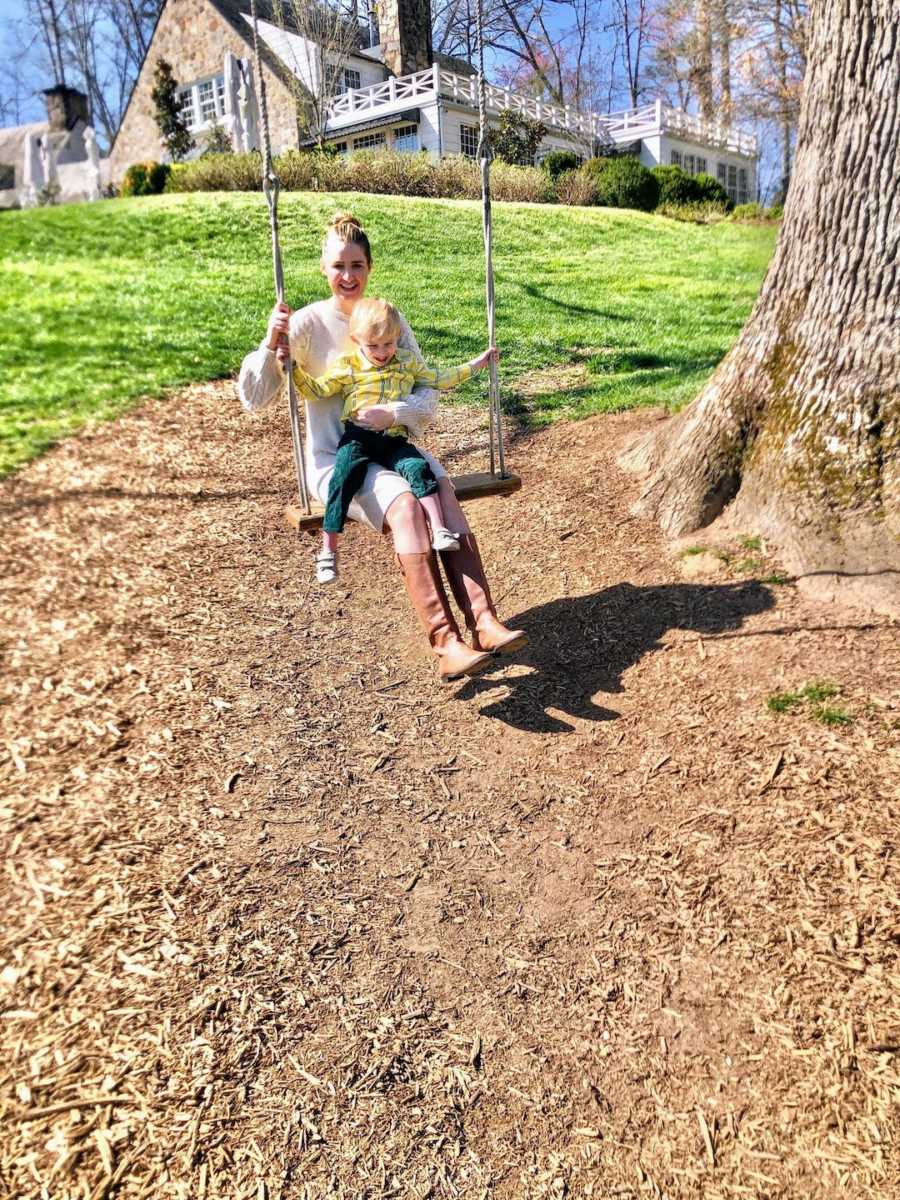
After both time with my son and talking with others in the community of blindness, I slowly began to realize I was among those with terrible misperceptions about blindness and disability. The number one fear of humans next to death is blindness. This statistic now makes me shudder, while before Finn, I probably held the same fear. I was looking at my son as if he was broken, as if he was going to be ‘less than.’ I was so wrong.
I know now the biggest problem for Finn has nothing to do with lack of vision— blindness is a disability of access and societal perception. The problem is my son was born blind in a sighted world where the perception most have of blindness is it’s a tragedy, or low expectations should be set for those without vision; a society where the word blind is often used as an insult or to mean clueless. Up to 90% of what a sighted child learns is through the visual pathway, but this does not mean my son CAN’T learn the same information.

In fact, Finn can do and learn anything his sighted peers can—he just often must do or receive this information in a different way. When the cloud lifted, I started looking into early intervention services to help us navigate this new way of learning for our son. I knew any child born with disabilities or delays is entitled to free services to help them succeed to the best of their abilities, but I had no knowledge of what services a blind child would qualify for or need. I dove into research and learned the two most important services Finn would need would be a TVI (Teacher for the Visually Impaired) and an O&M (Orientation and Mobility Specialist). A TVI provides tools and education specifically for those with visual disabilities. An O&M teaches those with visual disabilities to move safely and independently throughout their environment. I’d never heard either of these terms before. I was a bit dismayed no one—none of the doctors we’d seen—had yet suggested to us we should apply for these services.
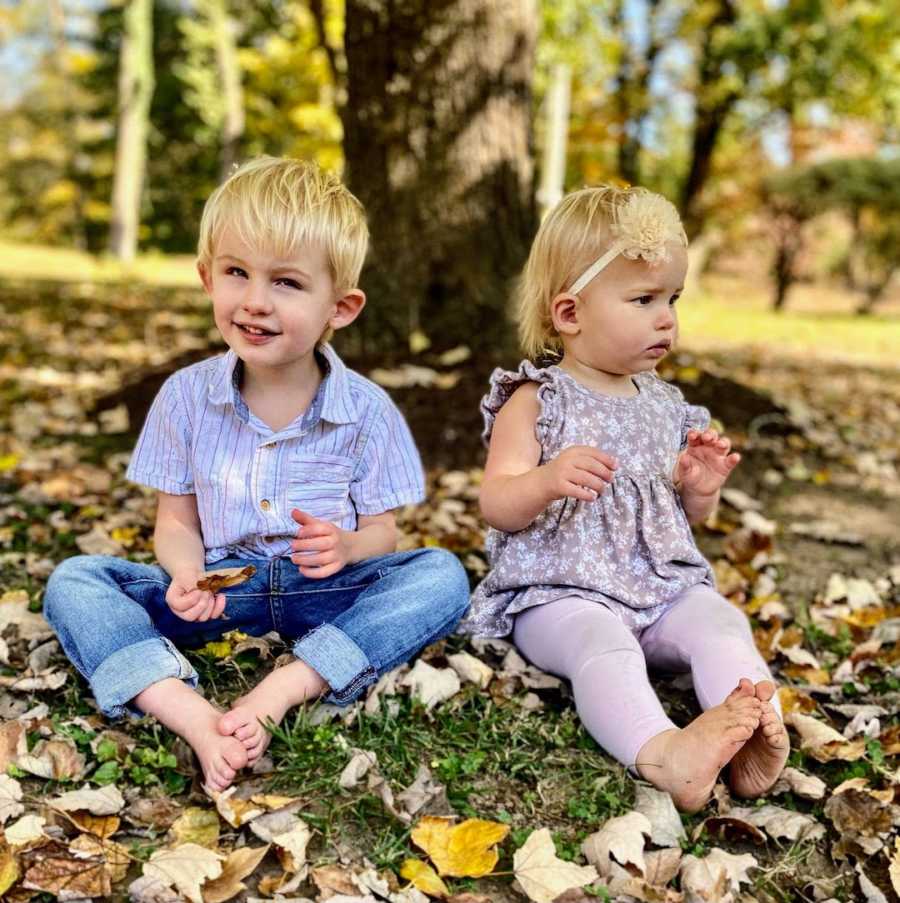
We were approved for a developmental therapist, but I was told they would have no background in visual disabilities. I couldn’t believe my blind child was approved for services, but none of those services were specific to blindness. I was told if I wanted a TVI or O&M, I would need to obtain those services privately. I began to wonder, ‘What about parents who can’t afford to pay for services on their own? What about parents who don’t even know these services are out there? Are they just left to fall through the cracks?’ The answer was yes, and I found this to be unacceptable. I contacted anyone and everyone I could and pushed back hard enough until I was eventually successful in getting a TVI ‘on loan’ from the School for the Blind to come and work with us. I was the squeaky wheel. Now three years later, I look back and know just how crucial her support was.
She taught us to let our son know before we picked him up so as not to scare him, how to motivate him to crawl, how to help him navigate his way around our house, how to use textured tape at the top and bottom of our stairs to alert him to their presence ahead, how to Braille his books, what a pre-cane was, and so much more. She wasn’t there to teach my son—she was there to teach us, and this is exactly what we needed. I know without a doubt, had we waited until now to begin these services, Finn would assuredly be at greater developmental delays and disadvantage entering the school system. I know not every caregiver raising a child with a visual disability knows having the services of a TVI is not only critical but their right. I know not every caregiver may be able to fight for a TVI at a time when energy and time are scarce. I know many often give up because they are told it’s not possible due to a nationwide shortage of these providers. I also know what it’s like to be struggling with acceptance of a diagnosis, to be on an emotional roller coaster, and, during seemingly non-stop medical appointments, just wanting for one thing to be easy.
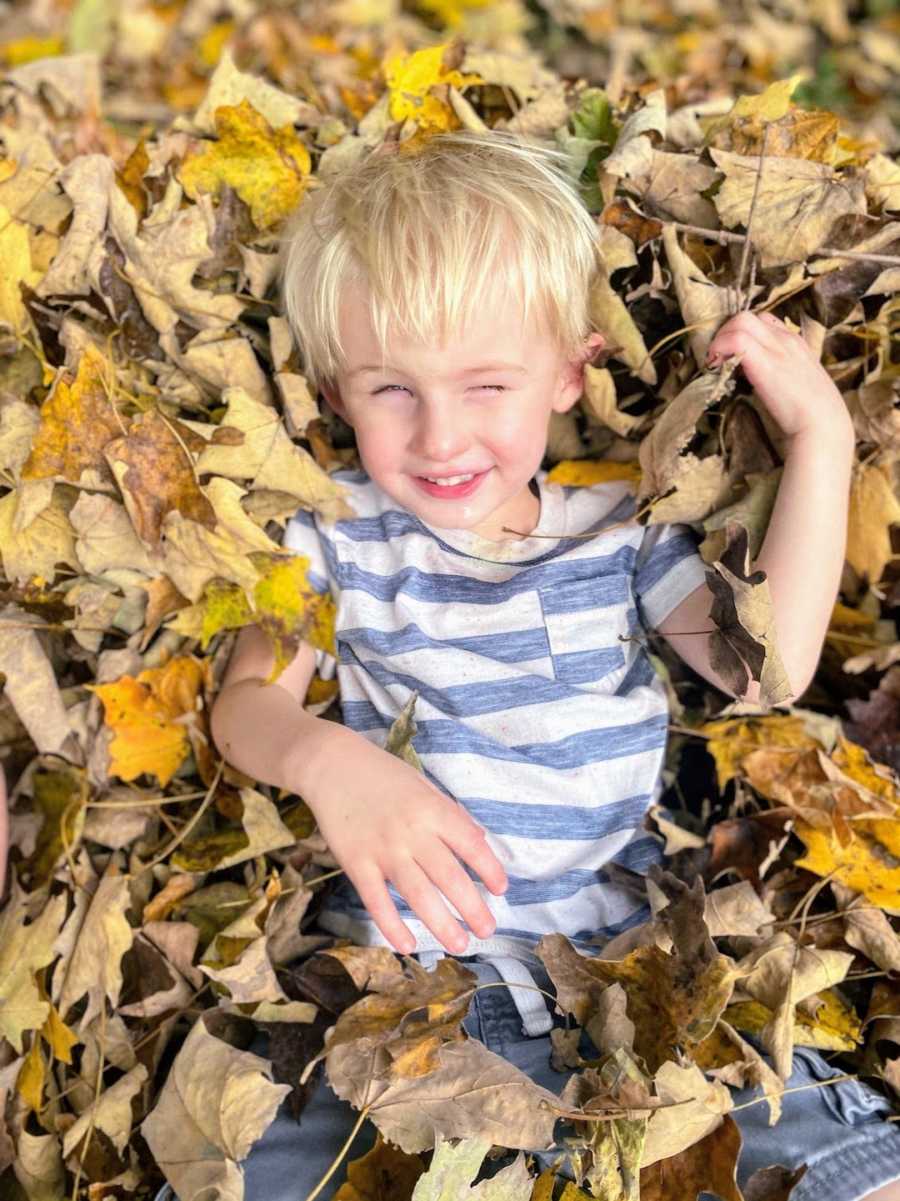
When COVID hit, my frequent work travel came to a halt, so I decided to start taking classes online through a TVI program. I wanted to learn Braille and other information that could help us support Finn in the future. Well, after starting the program, I knew I needed to do more. Soon thereafter, I connected with my friend, Stacy, also the mother of a young boy who is blind who had been through similar experiences to ours. We decided to join forces and do what we could to make things easier for the families who walk this path with and behind us.
In October 2020, Stacy and I founded Blind Early Services Tennessee, also known as BEST, a nonprofit organization supporting families of children ages 0-5, who are blind or visually disabled. BEST currently offers three programs free of charge to families: BEST Together, our family support program, BEST Start, our early intervention program, and BEST Transitions, our advocacy and IEP support program. One day, we hope to expand to preschool services, too.
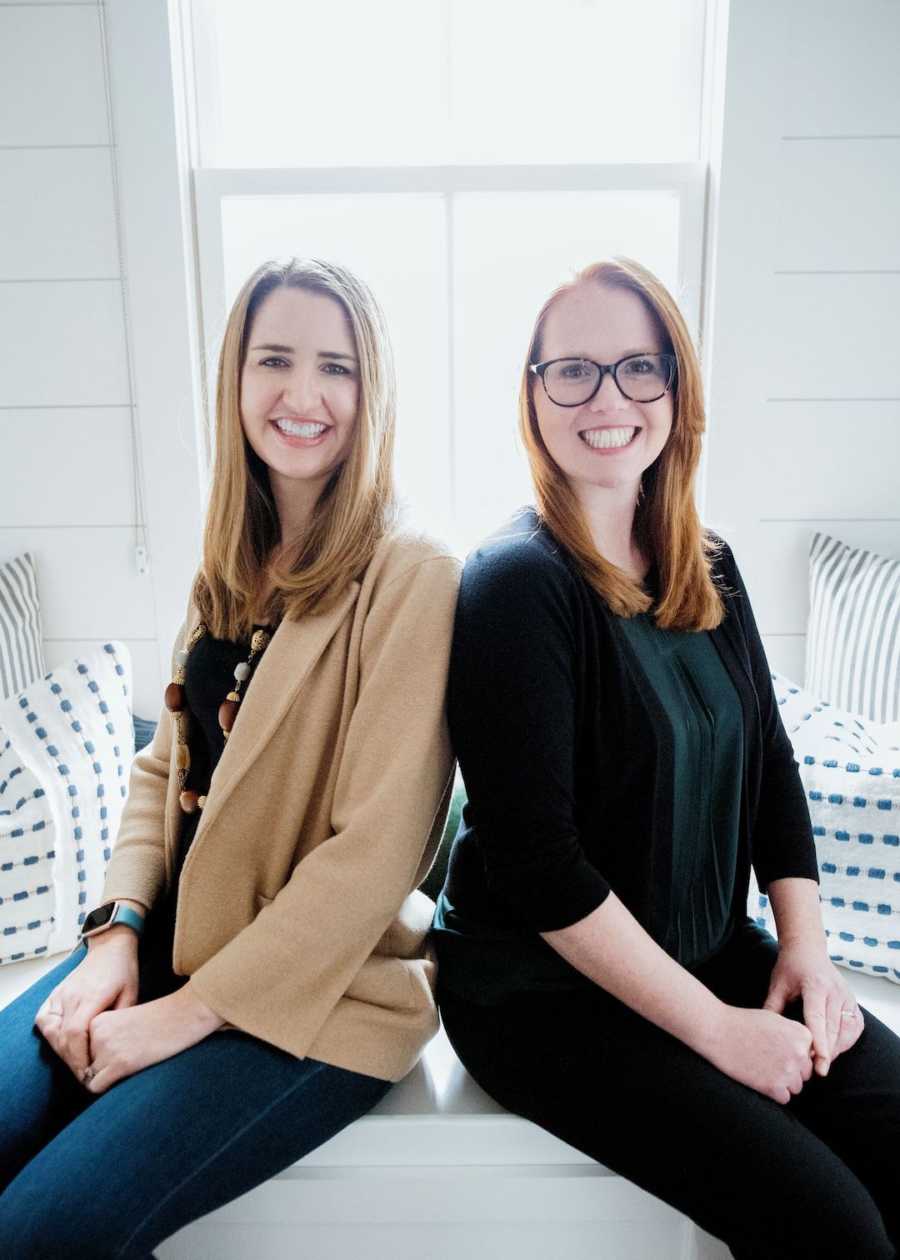
For others out there receiving a scary diagnosis for your child, you may begin to mourn the loss of a life you expected. We often dream of who and what our children will become. We look to our childhoods, to the lives of our friends’ children or other kids. We may think about the sports they might play, the schools they might go to, the career they might choose, the friends and partners they might bring home. We envision the so-called ‘normal’ life. This loss is real and for many of us, we need to sit with that for a while and it is okay—but I believe the best thing for our children is to not sit there indefinitely. Facing a disability does not have to mean the end to all those dreams.
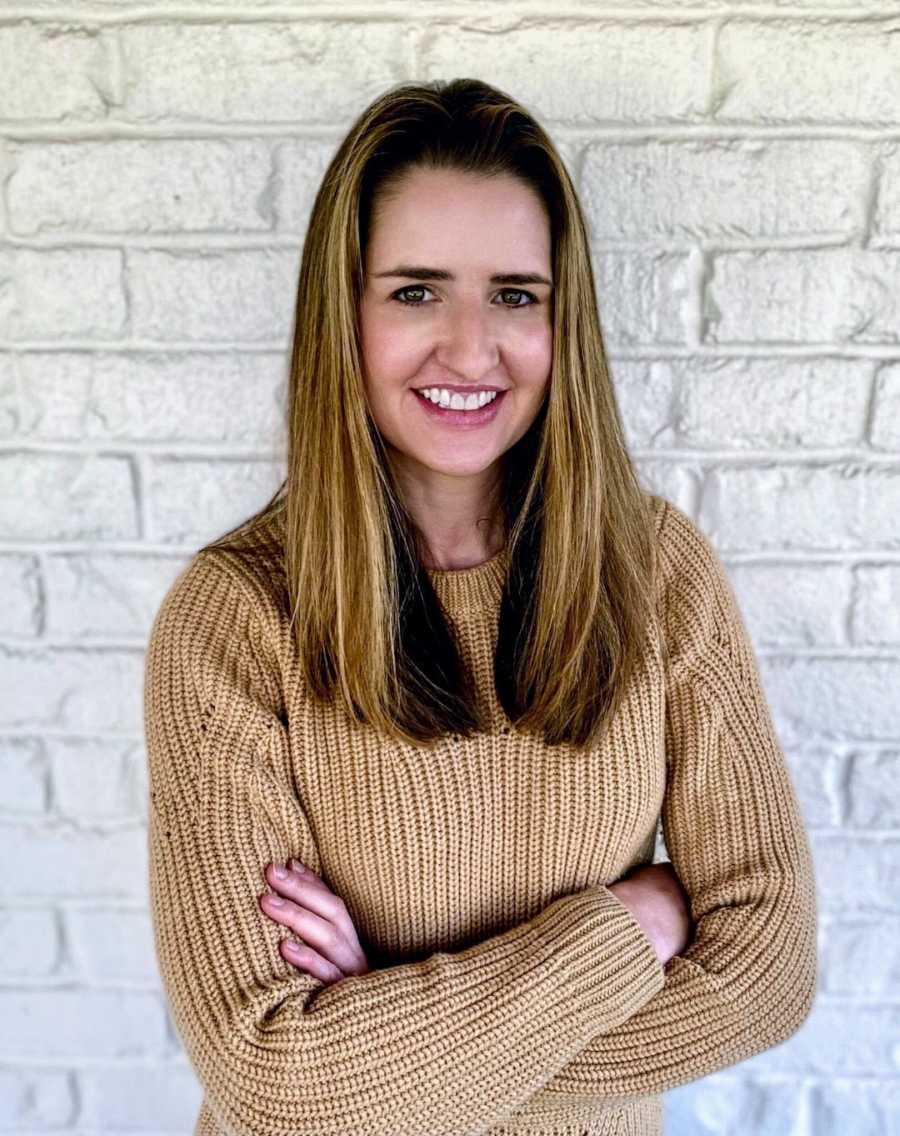
It often means the reality looks a bit different from what you thought, and from most other children their age, and it can be a very tough pill to swallow, but I learned as Finn’s parent, my job was to swallow the tough pill and not only accept but embrace the different path we, as a family, were on. This acceptance and shift in perspective have made all the difference for us both. Finn is now on the precipice of turning 4 years old and is happy and thriving! We still have a lot of learning to do on the road ahead of us, but I no longer fear our path. I know there are so many great things ahead for him and how lucky I am to be his mom. We should also be so lucky to know and love a Finn!”
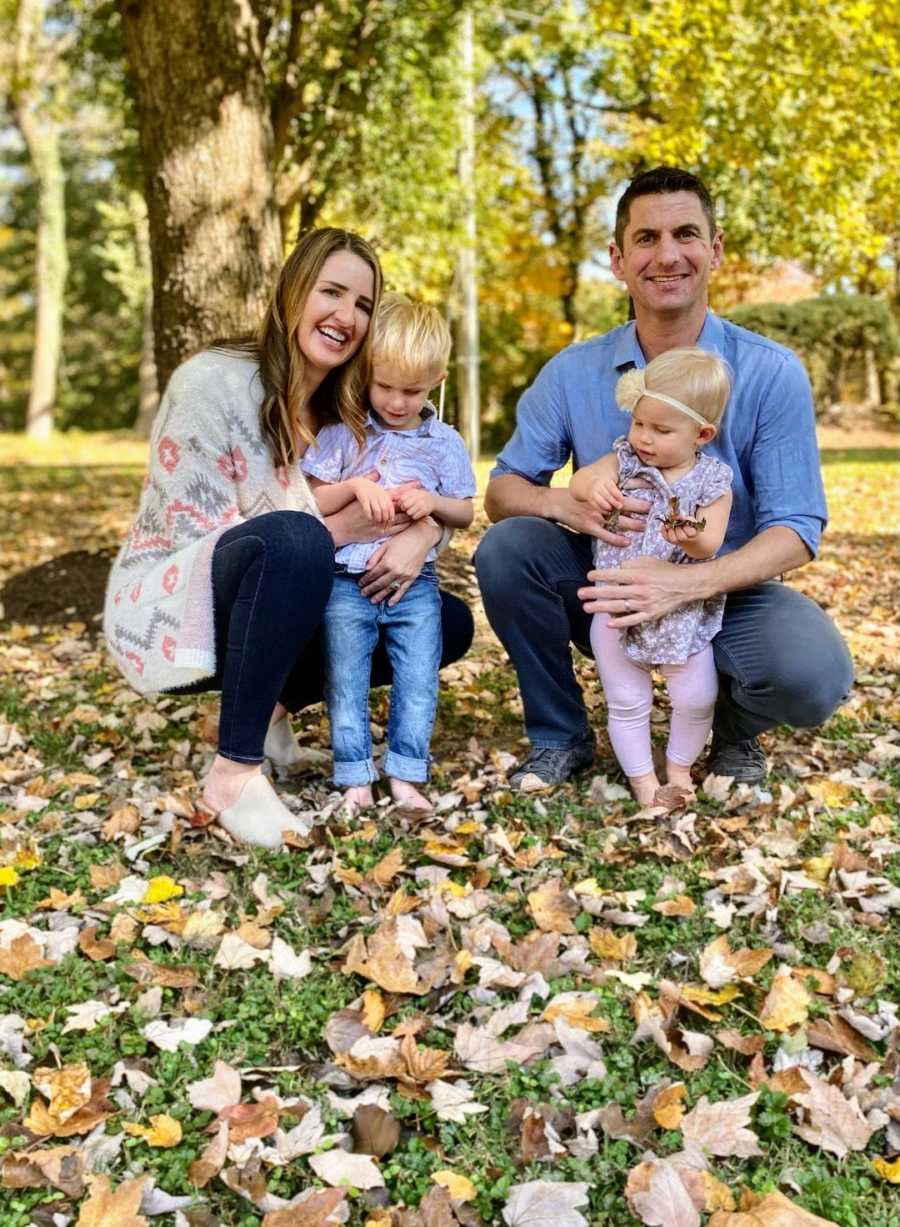
This story was submitted to Love What Matters by Alison Clougherty of Nashville, Tennessee. You can follow her journey on Instagram and her blog. Follow Alison’s nonprofit on their website, Instagram, Facebook, and podcast. Submit your own story here, and be sure to subscribe to our free email newsletter for our best stories, and YouTube for our best videos.
Read more stories like this:
Provide beauty and strength for others. SHARE this story on Facebook with friends and family.

